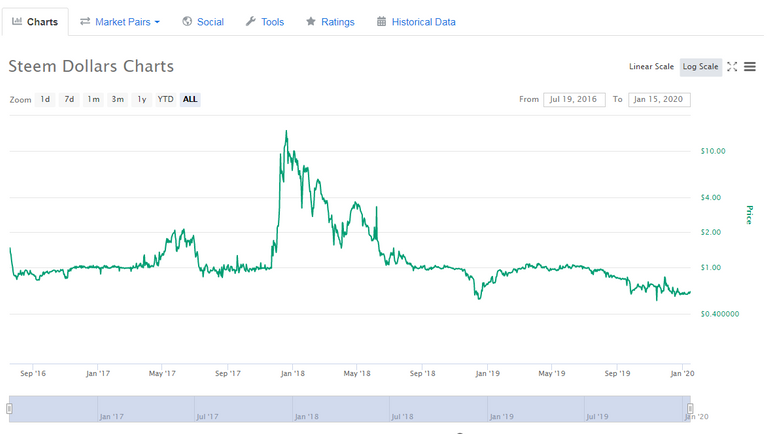Great explanation.
I've been saying for a long time now that SBD should just be abandoned entirely. The market mechanics that were built into it do not work well enough to create anything resembling a stablecoin.

SBD has been in the 1 USD range for maybe half of its history. While that is handy for speculation, it's not so good for storing purchasing power.
I think it would be far better for the blockchain to simply allocate newly created STEEM. And then we can all argue about how much STEEM should be created and who should get it.
I would say that SBD is more misunderstood than useless.
A stable asset based in a trustless economic system (Wich is the case) I may actually be more beneficial to the blockchain than a high price STEEM.
A naturally volatile asset like STEEM won't work as a good mean of transaction, but if SBD Target price (between $0.95 and $1.05) is reached, it can have a way bigger positive impact on the blockchain (Wich could drive STEEM prices up).
The economic model is well thought, but when the 2017 crypto hype happened, creating a quick price spike followed by a continuous price dropping (and the debt ratio went over 10%), the protection system started to work to avoid pressuring the steem price down even more.
See, the system is working as intended, and with time and the gradual increase of STEEM supply, the economy would eventually return to it's normal state, and to help push sbd price up again to 1 USD, the witnesses would set an interest to be paid to sbd holders.
I agree with all of that. But a system that takes years to work itself out isn't useful as a stable coin.
Right now you can buy SBD on the open market, hold it for a (long) time, and be reasonably confident that you'll make 60% gains. Like I said though, that's speculation, not using it as a stablecoin.
Therefore, buying and holding it to await for the price to rise is actually pushing the price back to 1 USD, so, working as designed.
At this moment, it is working as a speculative asset for basically 2 reasons: